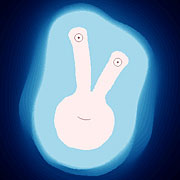
For Gabriel Orozco, the camera equals awareness. His focus is walking down the busy city streets, always aware of what is going on, and using his camera to capture the most minute details. He is unusual in that he doesn't have a studio that he goes and works in. He does not want to isolate himself from reality. To me, this kind of sets him apart from other artists. He also works with spaces a lot, altering them, and altering the amount of space between objects, like crunching the car together or put a pond in the middle of a ping pong table. He also likes to be a novice or hobbyist. He wants the art itself to be down to earth, to be something everyone can do.



















